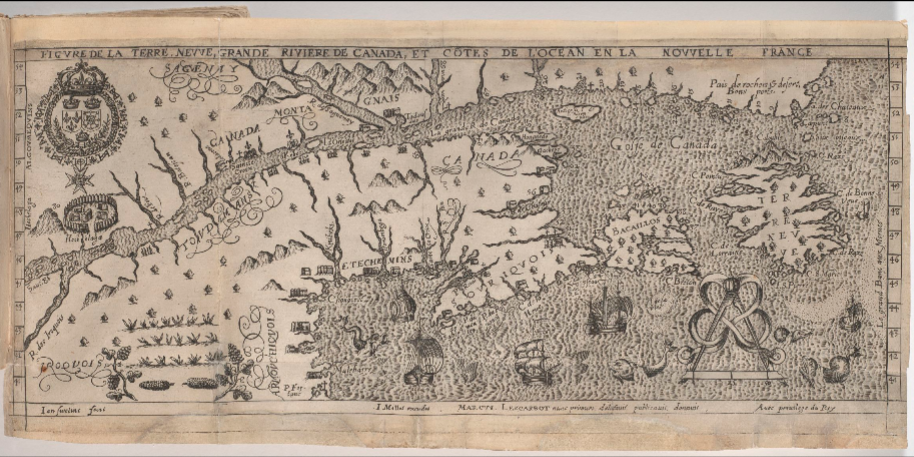bloc_article_content
French cartography of the Saint Lawrence River
The oldest known maps of the Saint Lawrence River are the work of Norman cartographers who collected information from sailors who had navigated the Atlantic Ocean.
Produced in the 1540s and 1550s, Norman maps took the form of large planispheres depicting the world as it was then known to Europeans. A separate North-American continent is shown, distinct from Asia, as is the Saint Lawrence River, its banks dotted with French and Indigenous place names. Iconographic depictions of North American flora and fauna, as well as dubious drawings of Indigenous peoples, appear side by side with illustrations of ancient and medieval legends, like the unicorns and Pygmies on a map by Pierre Desceliers. Few texts and mpas a this time agreed on geography but several toponyms (place names) on Norman maps reflects the official voyages made by Jacques Cartier and Jean-François de la Rocque de Roberval between 1534 and 1543. Sailors generally oriented themselves with a compass and recorded observations, like travel distance between places, in charts and ships' logs. This information could then be transformed into basic maps of the places the ship had visited, in the tradition of the portolan charts that had already been used for the Mediterranean Sea since the 14th century.
Norman cartography harnessed nautical knowledge to map accurate coastlines, but barely touched on the geography of inland territories, sailors being largely unwilling to leave their ships for unexplored lands. While Norman maps suggest they knew almost nothing of Indigenous territories in the interior, what little toponymy there is bears traces of contact with Iroquoian villages on the Saint Lawrence River. The name “Quebecq,” an Algonquian toponym, first appears on a map from Dieppe dated 1601. This adoption of Indigenous language is just one of many signs pointing to regular contact between European traders and local inhabitants.
In the early 17th century, maps of the Saint Lawrence River were published by two major figures in the French colonization of the Americas, Marc Lescarbot and Samuel de Champlain. Their maps locate the settlements of the French in Acadia and Canada. Compared to his predecessors, Champlain was particularly innovative in his description of the territories claimed by France. His personal inspection of the land recorded not only the distances and directions he traveled, but also information from Indigenous guides about places and peoples beyond his route. On returning to France after his expedition to Canada (1603), he hastened to publish an account of his journey, titled Des Sauvages, and to report to King Henri IV, to whom he showed a map of the lands he had visited. The map was never published, but we can surmise that a later map of New France, dated 1612, contains the information gathered from Indigenous informants nine years earlier. For example, the later map shows not only the stretch of the Saint Lawrence River known to the French (from the Atlantic Ocean to Montreal), but also the river’s western course, not yet visited by Champlain, with a winding stream leading to two successive Great Lakes separated by a large waterfall (Niagara Falls).
Published in may 2021


